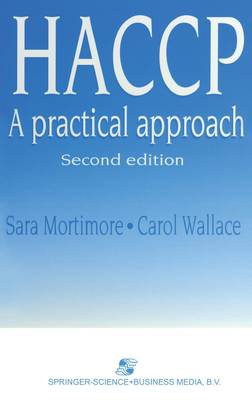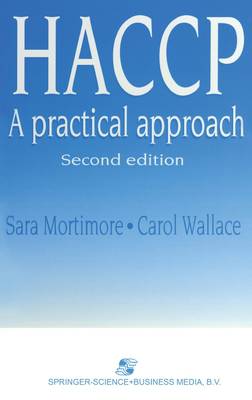
- Retrait gratuit dans votre magasin Club
- 7.000.000 titres dans notre catalogue
- Payer en toute sécurité
- Toujours un magasin près de chez vous
- Retrait gratuit dans votre magasin Club
- 7.000.000 titres dans notre catalogue
- Payer en toute sécurité
- Toujours un magasin près de chez vous
151,45 €
+ 302 points
Format
Description
1 An introduction to HACCP.- 1.1 Where did HACCP come from?.- 1.2 Why should I use HACCP?.- 1.3 How does HACCP help?.- 1.4 What are the benefits?.- 1.5 Are there any drawbacks?.- 1.6 What are the Principles of HACCP?.- 1.7 Is HACCP applicable to everyone?.- 2 Why use HACCP.- 2.1 Management of product safety.- 2.2 Examples of food safety incidents.- 2.3 Limitations of inspection and testing.- 2.4 External pressures.- 2.5 Prioritization for improvement.- 2.6 Meeting food safety objectives.- 2.7 The benefits.- 3 Preparing for HACCP.- 3.1 Preparing the way - personnel and training.- 3.2 What is our current status? - baseline audit and gap analysis.- 3.3 How do we get there?.- 3.4 Summary.- 4 An introduction to hazards, their significance and control.- 4.1 Hazards and their significance.- 4.2 Hazard types.- 4.3 Understanding control measures and control points.- 4.4 Practical hazard control.- 5 Designing safety into products and processes - can it be made safely?.- 5.1 Intrinsic factors.- 5.2 Raw materials.- 5.3 Process technologies.- 5.4 Establishing a safe and achievable shelf-life.- 5.5 Product safety assessment.- 6 How to do a HACCP Study.- 6.1 What is the HACCP Plan?.- 6.2 Define your terms of reference.- 6.3 Describe the products and their intended use.- 6.4 Constructing a Process Flow Diagram.- 6.5 Carrying out the hazard analysis.- 6.6 Where are the Critical Control Points?.- 6.7 Building up the HACCP Control Chart.- 6.8 Process capability - can the Critical Limits be met?.- 6.9 Challenging your controls.- 6.10 Validation of the HACCP Plan.- 7 Putting the HACCP Plan into practice.- 7.1 Implementation requirements.- 7.2 Implementation Team.- 7.3 Training.- 7.4 Set up monitoring systems.- 7.5 Record keeping.- 7.6 Facilities and equipment.- 7.7 Implementing the Plan.- 7.8 Confirm and verify that implementation is complete.- 8 HACCP as a way of life - maintaining your HACCP System.- 8.1 Initial and ongoing verification through audit.- 8.2 Analysis of data.- 8.3 Keeping abreast of emerging hazards.- 8.4 Updating and amending your HACCP Plan.- 8.5 Ongoing training requirements.- 8.6 Summary of maintenance requirements.- 9 Broader applications - linking HACCP with other Quality Management techniques.- 9.1 HACCP and Quality Management Systems.- 9.2 Laboratory accreditation.- 9.3 Broader applications of HACCP.- 9.4 Using HACCP in targeting resource - a strategy for continuous improvement.- 10 Epilogue.- 10.1 Introduction.- 10.2 Integrated food safety management system.- 10.3 Education and training.- 10.4 Closing thoughts from the authors.- References, further reading and resource material.- Appendices.
Spécifications
Parties prenantes
- Auteur(s) :
- Editeur:
Contenu
- Nombre de pages :
- 428
- Langue:
- Anglais
- Collection :
Caractéristiques
- EAN:
- 9780412754401
- Date de parution :
- 02-12-98
- Format:
- Livre relié
- Format numérique:
- Genaaid
- Dimensions :
- 156 mm x 234 mm
- Poids :
- 771 g







